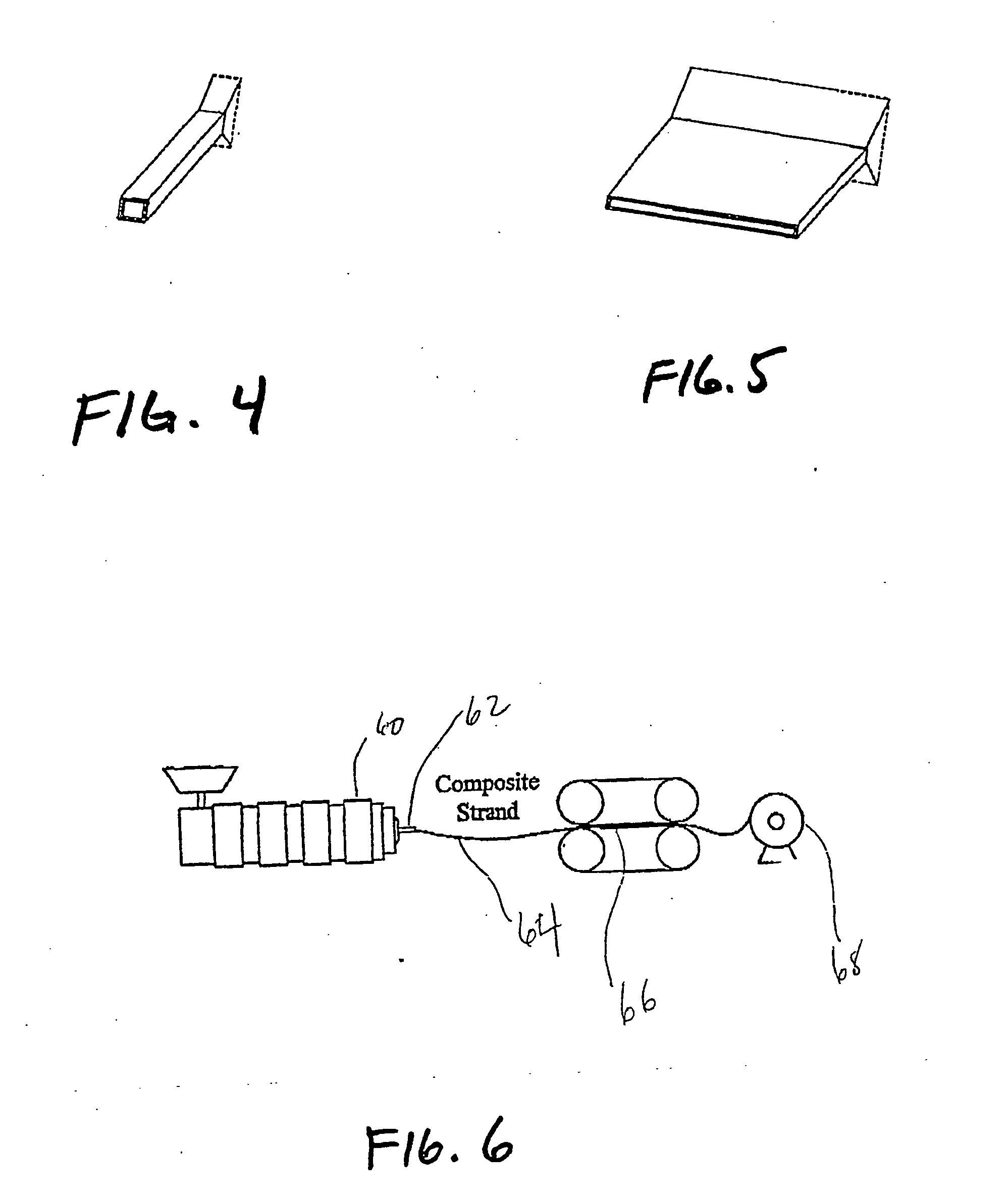Polymer matrix composite
a polymer matrix resin and composite technology, applied in the direction of cell components, non-conductive materials with dispersed conductive materials, connection contact material materials, etc., can solve the problems of reduced service rating, poor adhesion to polymer matrix resins, and low modulus of elasticity and poor abrasion resistance, so as to enhance fiber orientation and the effect of large length to width ratio
- Summary
- Abstract
- Description
- Claims
- Application Information
AI Technical Summary
Benefits of technology
Problems solved by technology
Method used
Image
Examples
working examples
The following working examples are provide to more thoroughly illustrate the present invention.
Fiber Alignment
To evaluate polymer matrix composite articles formed in accordance with this invention, test specimens were formulated containing 1 to 23% volume fraction vapor-grown carbon fiber made in accordance with the above-noted Tibbetts et al. patent, U.S. Pat. No. 5,024,818. The fibers had a diameter of about 0.2 micrometers and lengths ranging from 50 to 100 microns and were manufactured by Applied Sciences, Inc., (“ASI”) of Cedarville, Ohio, under the name PR-21-AG. They are essentially soot-free and are characterized by having an apparent density of less than about 0.02 grams per cubic centimeter. The fibers were dried in a vacuum oven at approximately 300° C. for duration of about 3 hours to assure removal of moisture and volatiles. They were then thoroughly mixed in a dual-shell dry blender with Pro-Fax 6301, a polypropylene homopolymer manufactured by Montell U.S.A. Inc....
PUM
| Property | Measurement | Unit |
|---|---|---|
| surface to volume ratio | aaaaa | aaaaa |
| length | aaaaa | aaaaa |
| length | aaaaa | aaaaa |
Abstract
Description
Claims
Application Information
 Login to View More
Login to View More - R&D
- Intellectual Property
- Life Sciences
- Materials
- Tech Scout
- Unparalleled Data Quality
- Higher Quality Content
- 60% Fewer Hallucinations
Browse by: Latest US Patents, China's latest patents, Technical Efficacy Thesaurus, Application Domain, Technology Topic, Popular Technical Reports.
© 2025 PatSnap. All rights reserved.Legal|Privacy policy|Modern Slavery Act Transparency Statement|Sitemap|About US| Contact US: help@patsnap.com



